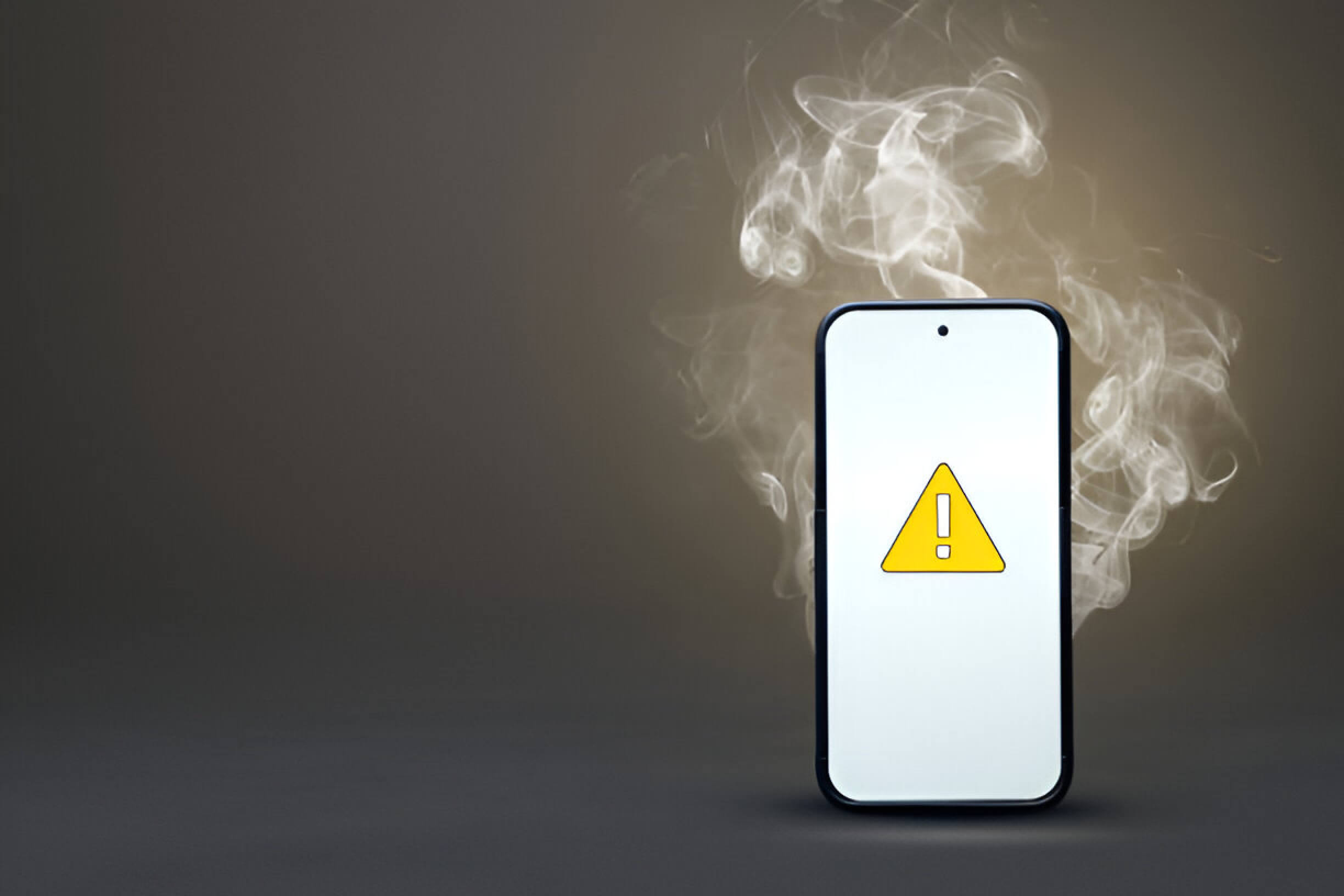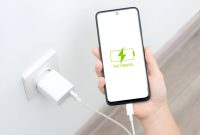Our smartphones have become indispensable tools in our daily lives, but they can sometimes become uncomfortably hot. Overheating is more than just a nuisance; it can damage your device and reduce lifespan. To help you keep your phone cool and functioning optimally, here are ten effective strategies:
1. Remove the Phone Case

Removing your phone case is a simple yet powerful method to enhance heat dissipation, transferring heat from one place to another and improving overall device cooling. Phone cases, while protective, can act as insulators, trapping heat generated by the device during operation. Removing the case empowers your phone to ventilate better, allowing heat to escape from the device’s surface more freely.
This cooling technique is beneficial when your phone runs resource-intensive applications such as high-definition games, video editing software, or charges, as these activities generate more heat. Without the barrier of a case, the phone’s built-in cooling mechanisms can work more efficiently, helping to maintain optimal operating temperatures.
However, it’s important to note that while case removal can aid in cooling, it also leaves your device more vulnerable to physical damage. Consider removing the case only in safe environments and when additional cooling is necessary. For day-to-day use, opt for cases designed with ventilation to strike a balance between protection and heat dissipation.
2. Avoid Direct Sunlight and Heat Sources
Environmental factors play a crucial role in preserving the quality and longevity of your perfume. One of the most important precautions is avoiding direct sunlight and heat sources. Sun exposure can rapidly degrade the delicate compounds in your fragrance, altering its scent profile and reducing its overall potency. Heat-prone areas, such as your car dashboard or windowsills, can have a similar detrimental effect on your perfume’s composition.
Store your fragrance in a cool, dark place away from direct sunlight to protect it. Avoid leaving your perfume in areas that experience temperature fluctuations or excessive heat, such as bathrooms or near radiators. Instead, keep your perfume in a dresser drawer, closet, or dedicated storage box. By shielding your fragrance from these harmful environmental factors, you can maintain its intended scent and ensure it lasts longer, allowing you to enjoy your favorite perfume for an extended period.
3. Close Background Apps and Processes
Effective app management is crucial for optimizing your device’s performance and battery life. Many users unknowingly leave resource-intensive apps running in the background, which can significantly drain battery power and slow system processes, especially when the device is overheating. By regularly closing these background apps and processes, you can take proactive control of your device’s performance and ensure it operates at its best.
Access your device’s app manager or task manager to view all running applications. Identify and close any apps you’re not currently using, especially resource-intensive ones. Popular social media apps, video streaming services, and games are often culprits in excessive battery consumption.
Additionally, some devices offer built-in battery optimization features that automatically manage background processes. Enabling these options allows your device to intelligently restrict battery usage for apps that aren’t essential for immediate functionality.
Remember that specific system processes are necessary for your device to function correctly, so exercise caution when closing background tasks. To avoid potential stability issues, focus on user-installed apps rather than core system processes.
These app management practices can extend your device’s battery life and maintain optimal daily performance.
4. Turn Off Unused Features and Connections
Maximizing your smartphone’s battery life often involves managing its features and connections. Many of these, while helpful, can be significant battery drains when left active unnecessarily. Here are some key features to keep an eye on:
Bluetooth: Turn this feature off when not actively using wireless headphones or other Bluetooth devices. It constantly searches for nearby devices, consuming power in the process.
Wi-Fi: Disable Wi-Fi if you’re not within range of a known network. Your phone will otherwise continually scan for available networks, depleting your battery.
GPS: Location services are notorious battery hogs. Unless you’re using navigation apps, consider turning off GPS to conserve power.
Mobile Data: When Wi-Fi is available, switch off your mobile data. 4G and 5G connections require more power than Wi-Fi to maintain.
Other battery-draining features to manage include:
– Screen brightness (use auto-brightness or lower it manually)
– Push notifications (limit these to essential apps only)
– Background app refresh (disable for non-critical apps)
By being mindful of these features and turning them off when not in use, you can significantly extend your device’s battery life throughout the day.
5. Reduce Screen Brightness
Reducing screen brightness is an effective way to conserve battery life on your device. Modern smartphones and tablets use significant power to illuminate displays, making this adjustment particularly impactful. Access your device’s display settings and manually adjust the slider to a comfortable yet dimmer level to lower your screen brightness. Many devices also offer an auto-brightness feature, which automatically uses ambient light sensors to adjust screen intensity based on your surroundings. This can help optimize power consumption throughout the day.
Consider enabling night or dark mode for even more significant energy savings, especially during evening hours. These settings reduce eye strain and decrease power usage on devices with OLED or AMOLED screens. By implementing these simple changes to your display settings, you can extend your device’s battery life and reduce recharge frequency, ultimately improving your overall user experience.
6. Use Airplane Mode When Signal is Weak
When your device struggles to maintain a stable cellular connection in areas with weak signals, it can significantly impact your battery life. In these situations, your phone continuously searches for a network, consuming substantial power. Activating Airplane Mode can be a simple yet effective solution to this problem.
By enabling Airplane Mode, you temporarily turn off all wireless communications, including cellular, Wi-Fi, and Bluetooth. This prevents your device from expending energy on fruitless network searches. While in Airplane Mode, you can still manually activate Wi-Fi or Bluetooth if needed, allowing you to stay connected to local networks without draining your battery searching for a cellular signal.
The benefits of using Airplane Mode in weak signal areas are significant. It conserves your battery and prevents your device from overheating due to constant network searching. This feature puts you in control, allowing you to stay connected to local networks without draining your battery. It may help preserve the longevity of its cellular components. Remember to disable Airplane Mode once you’re back in an area with better coverage to resume standard cellular functionality.
7. Update Your Apps and Operating System
Regularly updating your apps and operating system is crucial for maintaining optimal device performance and security. Software updates often include bug fixes, performance improvements, and new features that can enhance your user experience. These updates also address potential vulnerabilities, protecting your device from emerging security threats.
For operating system updates, manufacturers frequently release patches that optimize system performance, improve battery life, and introduce new functionalities. Keeping your OS current ensures compatibility with the latest apps and services.
Developers continuously work on refining individual apps. Updates may include interface improvements, faster load times, and better integration with other services. Some apps even introduce entirely new features that can significantly improve their utility.
To stay on top of updates, enable automatic updates whenever possible. Regularly check your device’s app store or settings menu for manual updates. Remember, updating your apps and operating system is a simple yet effective way to keep your device running smoothly and securely.
8. Avoid Charging While Using Intensive Apps
When charging your device, you must be mindful of your activities simultaneously. Intensive applications, particularly mobile games or resource-heavy software, can significantly increase your device’s temperature when combined with charging. This combination of power input and high processing demands places considerable stress on your device’s components.
Gaming while charging is especially problematic, as it often requires maximum CPU and GPU performance, leading to rapid heat buildup. This excess heat can affect your device’s short-term performance and contribute to long-term battery degradation and potential hardware issues.
Multitasking during charging, especially with demanding apps, can exacerbate the heating problem. Your device is already working to manage the charging process, and adding intensive tasks can push it beyond its optimal operating temperature.
Avoid using intensive applications while plugged in to preserve your device’s longevity and ensure efficient charging. If you must use your device while charging, stick to lighter tasks such as reading, browsing, or messaging. This approach helps balance functionality and device health, reducing unnecessary stress on your valuable technology.
9. Use Phone Cooling Apps
Phone cooling apps can be valuable tools in managing your device’s temperature and optimizing its performance. These applications typically offer a range of features designed to keep your smartphone running smoothly and prevent overheating.
Temperature monitoring apps provide real-time information about your device’s internal temperature, allowing you to monitor potential overheating issues. Many apps include alerts that notify you when your phone reaches a critical temperature threshold.
CPU cooler apps work by identifying and closing unnecessary background processes that may be causing your phone to heat up. By reducing the workload on your device’s processor, these apps can help lower its temperature and improve overall performance.
Task-killer features are often included in cooling apps, enabling you to close resource-intensive applications that may be contributing to overheating quickly. This can be particularly useful when your phone becomes unusually warm during use.
Performance optimizers are another common component of cooling apps. These tools can help streamline your device’s operations by clearing cache, freeing up RAM, and managing power consumption, all of which can contribute to a cooler-running phone.
While phone cooling apps can be beneficial, choosing reputable applications from trusted developers is essential to ensure your device’s safety and privacy. Additionally, these apps should be used in conjunction with other heat management practices for the best results.
10. Consider External Cooling Solutions
External cooling solutions can effectively manage your smartphone’s temperature, especially during intensive tasks or hot environments. Phone coolers, explicitly designed for mobile devices, attach to the back of your phone and actively dissipate heat. These compact accessories often use thermoelectric cooling technology or small fans to draw heat away from your device.
Cooling pads, while more commonly associated with laptops, can also be adapted for smartphone use. These larger platforms provide a stable surface with built-in fans to circulate cool air around your device. Heat sinks can be attached to your phone’s exterior for a more passive approach, increasing the surface area for heat dissipation.
External fans, either handheld or stand-mounted, offer a versatile cooling option. By directing a steady stream of air over your device, they can help maintain a lower operating temperature. When choosing any external cooling solution, ensure compatibility with your specific smartphone model and consider factors such as portability, power source, and noise levels.
While these accessories can be beneficial, it’s important to remember that they should complement, not replace, proper device care and usage habits. Combining internal management techniques and external cooling solutions can help optimize your smartphone’s performance and longevity.










